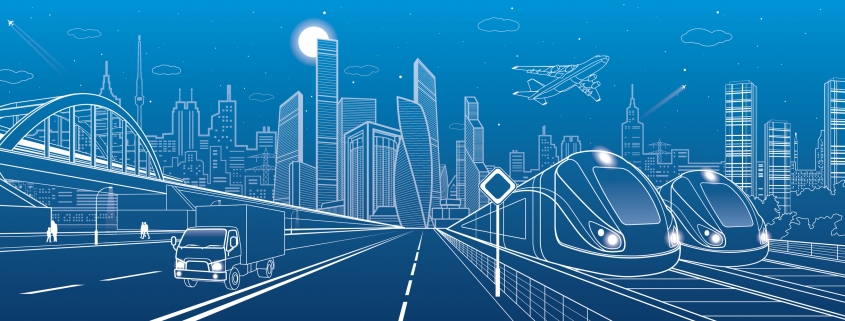Traveling in a Circular City
In the next Prefecture Podcast, we are diving into the circular city’s transportation and medical sectors and how KAILE, our automated AI system, will be involved in both.
How would transportation change in a circular city?
In circular city models, transportation is often re-imagined as rapid, clean, emissionless, silent, and easily accessible to the entire populous. In circular cities, congested streets and stand-still traffic would be a thing of the past. Circular city transport emphasizes adopting electric transportation in both private and public sectors and shifting to micromobility (e.g. e-scooters, e-bikes, etc.).
And we can’t discuss transportation without a circular city’s unique internal infrastructure. Given a circular city’s design concept with radial sectors and circular belts, people would be able to easily return to their destinations without taking the same route back, unlike linear designs. Citizens within the residential belt would all be equidistant to the city center and other locations.
A key principle of circular city transport is shared mobility, or an “as needed” access to transport for the entire populous. This could include electric car-sharing, shared autonomous vehicles, microtransit like electric bikes and scooters, shared-microtransit, and public transport options.
Some transportation technology envisioned in smart cities includes maglev, or magnetic levitation, trains and electric bus platoons that travel on electric grids. Maglev transportation uses two sets of magnets, one to repel and push the train off the tracks, and another to move the train forward. Autonomous electric buses could form platoons, or follow each other for short distances and easily split and reconnect on an electric grid. Another type of transport tech is the transveyor, which functions like an autonomous conveyor belt that moves horizontally, vertically, and radially around the circular city.
What types of transportation do you envision in a circular city?
How could circular city transportation advance medical needs and emergency services?
The typical circular city design generally features a central dome, in which core educational buildings, research centers, health or childcare facilities, or communications and networking systems can be equally accessed by all in the heart of the city. The circular city’s people-first design makes medical centers and services equally available and equidistant to all residents living in the residential belt.
These short, equal distances make it easier to advance and optimize medical response and emergency transportation. Some even envision vertical take-off and landing (VTOL) aircrafts as the primary emergency response transportation, in which the aircraft can hover, take off, and land vertically.
Tune into the next Prefecture Podcast for a more in-depth discussion transportation, medical services, and KAILE!
Can’t wait to start the discussion? Drop a comment below!





Leave a Reply
Want to join the discussion?Feel free to contribute!